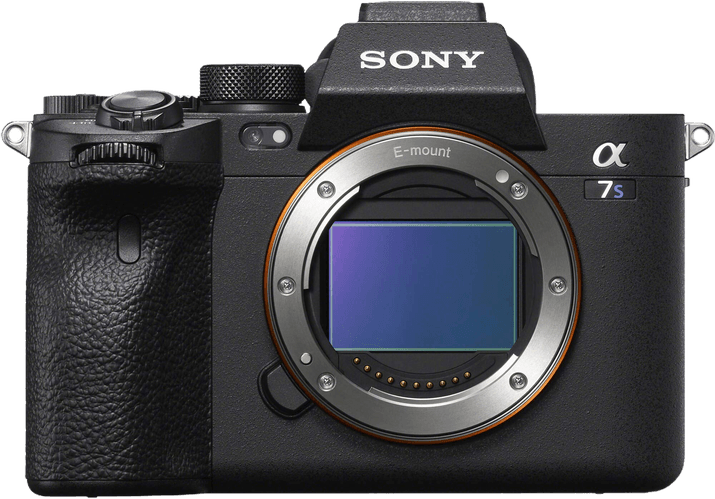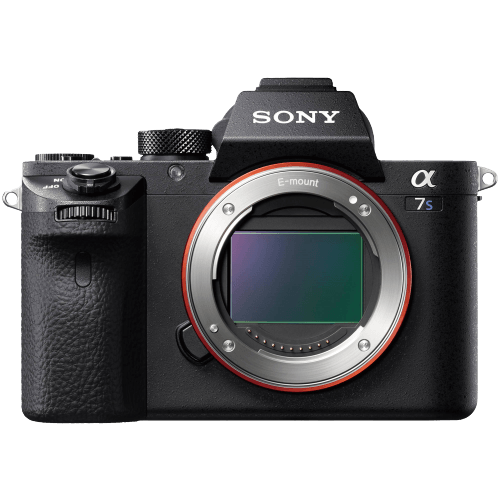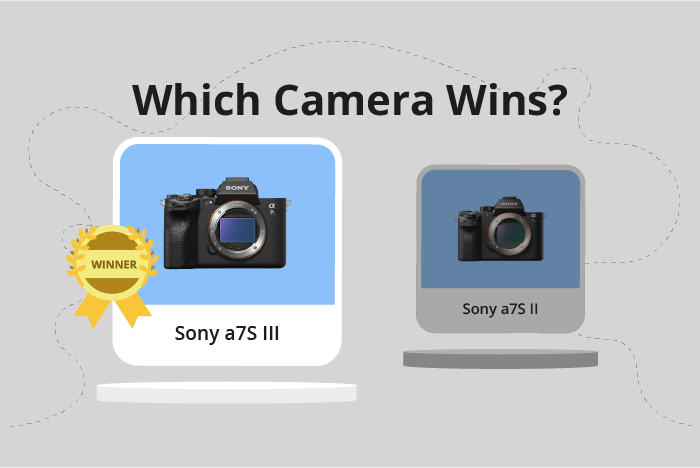Sony a7S III vs a7S II Comparison
Sony a7S III

Sony a7S II

The Sony a7S III outperforms the Sony a7S II with a score of 74/100 compared to 60/100. Both cameras are mirrorless and share similar dimensions, with the a7S III measuring 129 x 97 x 81mm and the a7S II at 127 x 96 x 60mm. The a7S III, released in 2020, boasts more advanced features than its 2015 predecessor, justifying its higher launch price of $3499 compared to the a7S II’s $3000.
The a7S III’s superiority lies in its improved performance and technology. However, the a7S II has a slight advantage in its lighter weight, at 627g compared to the a7S III’s 699g. This difference may appeal to those prioritizing portability.
Considering the 14-point score difference and advancements in technology, the Sony a7S III is the clear winner for those seeking a more powerful camera. The Sony a7S II remains a viable option for those prioritizing a lighter camera and lower price.
Sony a7S III vs a7S II Overview and Optics
The Sony a7S III outperforms the Sony a7S II with a score of 69/100 in optics compared to the latter’s 66/100. Both cameras share several features, including 12.1 and 12.2 megapixels, CMOS sensors, full-frame sensor sizes, Sony FE lens mounts, and image stabilization.
The Sony a7S III excels due to its improved shooting speed of 10 fps, compared to the a7S II’s 5 fps. This allows for capturing fast-moving subjects and action scenes more effectively. Additionally, the a7S III is equipped with a more advanced Bionz XR processor, enhancing image processing and overall performance. Its DXOMARK sensor score also surpasses that of the a7S II at 86 versus 85, implying better image quality.
The Sony a7S II, despite its lower score, has a slight advantage in megapixels at 12.2, which may contribute to marginally better image resolution. However, this difference is minimal and unlikely to impact overall image quality significantly.
In comparing optics, the Sony a7S III clearly outshines its predecessor due to its faster shooting speed, superior processor, and marginally better DXOMARK sensor score. While the Sony a7S II has a negligible advantage in megapixels, it does not outweigh the benefits provided by the a7S III’s improvements. As a result, the Sony a7S III is the better choice for those seeking enhanced performance in optics.
Sony a7S III vs a7S II Video Performance
The Sony a7S III outperforms the Sony a7S II in video capabilities, with a video score of 77/100 compared to the a7S II’s 56/100. Both cameras share some common specifications, such as a maximum video resolution of 4K and dimensions of 3840 x 2160. Neither camera has built-in time-lapse functionality.
The a7S III’s higher video score is primarily due to its significantly better maximum video frame rate of 120fps, compared to the a7S II’s 30fps. This higher frame rate allows for smoother and more detailed videos, particularly in fast-moving scenes or when capturing slow-motion footage. This improvement in frame rate makes the a7S III a more versatile and powerful camera for videography.
The a7S II, on the other hand, does not offer any advantages over the a7S III in terms of video capabilities. Its video score is lower, and its maximum frame rate is significantly less than that of the a7S III. The only similarity between the two cameras in this regard is their shared max video resolution and dimensions, as well as the lack of built-in time-lapse functionality.
Taking these factors into account, the Sony a7S III is the clear winner when it comes to video capabilities. Its superior maximum frame rate of 120fps provides a significant advantage over the a7S II’s 30fps, making it a more versatile and powerful option for videographers. The a7S II, while still offering 4K video resolution, falls short in comparison due to its lower video score and limited frame rate.
Sony a7S III vs a7S II Features and Benefits
The Sony a7S III outperforms the Sony a7S II with a feature score of 83/100, compared to the latter’s 57/100. Both cameras share several key specifications, including a 3-inch screen size, flip screen capability, lack of GPS, and WiFi connectivity.
The Sony a7S III has a higher screen resolution of 1,440,000 dots, compared to the a7S II’s 1,228,800 dots, providing a clearer and more detailed display. Additionally, the a7S III features a touchscreen, allowing for easier navigation and control, while the a7S II lacks this functionality. The a7S III also boasts Bluetooth connectivity, enabling seamless pairing with compatible devices for easy file transfer and remote control, a feature absent in the a7S II.
On the other hand, the Sony a7S II does not have any notable advantages over the a7S III in terms of features. Both cameras share many specifications, with the a7S III simply improving upon certain aspects, such as screen resolution and connectivity options.
Taking these points into consideration, it becomes evident that the Sony a7S III is the superior camera in terms of features. Its higher screen resolution, touchscreen functionality, and Bluetooth connectivity set it apart from the a7S II, making it the better choice for photographers and videographers seeking a more advanced and user-friendly option. The a7S II, while still a reliable camera, falls short in these aspects and may not provide the same level of convenience and functionality as its successor.
Sony a7S III vs a7S II Storage and Battery
The Sony a7S III outperforms the Sony a7S II in storage and battery with a score of 76/100, compared to the a7S II’s 21/100. Both cameras share the ability to use SD/SDHC/SDXC memory cards, but the a7S III has two memory card slots and is compatible with UHS-II and CFexpress Type A cards. The a7S II only has one memory card slot and compatibility with Memory Stick Duo/Pro Duo/Pro-HG Duo cards.
The a7S III’s battery life is superior, offering 600 shots with the NP-FZ100 battery, while the a7S II provides 370 shots using the NP-FW50 battery. Additionally, the a7S III supports USB charging, which the a7S II lacks.
Though the a7S II falls short in storage and battery, it may still be adequate for casual users who do not require extended battery life or additional memory card support.
Considering the significant advantages in storage and battery life, the Sony a7S III is the clear winner in this comparison. The additional memory card slot, compatibility with faster cards, and improved battery life make it a more reliable choice for professional and serious photographers.
Alternatives to the Sony a7S III and a7S II
Are you still undecided about which camera is right for you? Have a look at these popular comparisons that feature the Sony a7S III or the Sony a7S II:

